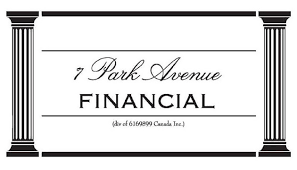|
ABL Lending Versus Bank Financing - What is Right For Your Business
ABL Lending vs Bank Financing: Pros and Cons Revealed
YOU ARE LOOKING FOR ASSET BASED FINANCING / ABL LENDING BANKING SOLUTIONS
BEYOND BANKS - THE ABL / ASSET BASED LOANS LENDING SOLUTION FOR CASH FLOW / WORKING CAPITAL
CONTACT US - OUR EXPERTISE / YOUR RESULTS
You've arrived at the right address! Welcome to 7 Park Avenue Financial
Financing & Cash flow are the biggest issues facing businesses today
Unaware / Dissatisfied with your financing options?
CONTACT US
Call Now! - Direct Line - 416 319 5769 - Let's talk or arrange a meeting to discuss your needs
Email - sprokop@7parkavenuefinancial.com

UNDERSTANDING THE ASSET BASED LENDING SOLUTION – WHAT IS IT / HOW DOES IT WORK?
When Banks Say No, Your Assets Say Yes
Traditional bank lenders reject 80% of small business loan applications, leaving you scrambling for working capital.
Traditional financing demands perfect credit, extensive documentation, and months of waiting. Meanwhile, your invoices pile up, inventory sits unpaid for, and growth opportunities slip away.
Let the 7 Park Avenue Financial team show you how Asset-Based Lending transforms your business assets into immediate capital, with asset based lenders bypassing traditional banking barriers -providing ongoing cash flow liquidity.
7 Park Avenue Financial is a trusted Canadian financing partner specializing in asset-based lending solutions. We help businesses unlock working capital by leveraging receivables, inventory, and equipment, delivering flexible ABL structures tailored to growth, turnaround, and restructuring needs.
As experts in asset-based financing, we provide practical, results-driven funding strategies that empower companies to strengthen cash flow and achieve long-term financial stability versus the challenge of traditional bank lending. That's how asset basedlending differs!
Are you enjoying life as a commercial borrower in Canada?
Many owners would hesitate to say yes. We have heard the stories, and they often point to the challenges of traditional financing.
That’s why asset-based lending, also known as ABL financing via independent asset based lenders has become a fresh and unique strategy in Canadian business finance.
What Is ABL Lending?
Asset-based lending, also called asset-based financing, is funding secured by business assets.
Companies borrow against receivables, inventory, and fixed assets—and in some cases, commercial real estate.
Unlike traditional lending via banks that prioritize credit scores, personal guarantees, and external collateral, ABL lenders focus on assets. This makes it a powerful alternative for businesses with valuable assets but limited access to traditional bank credit.
Comparing Asset-Based Lending and Bank Cash Flow Lending
One truth remains: the old ways don’t always work. Many Canadian firms struggle to qualify for unsecured bank loans and working capital credit facilities.
This is where ABL lending comes in. Whilen Canadian banks evaluate financial strength, ABL lending simply relies on asset value. For many owners, it’s a financing option that feels new—yet it has been a proven solution for years.
Interest Rates and Financing Costs
Which is better: a bank loan or ABL financing? The answer depends on your situation. Bank loans are cheaper, but qualifying can be difficult.
ABL financing is more flexible, but costs are higher. Borrowers must also provide regular updates on receivables, inventory, and payables. In some cases, intellectual property or brand value can be added to the borrowing base.
The Role of Creditworthiness in Bank Lending
Banks put heavy weight on leverage ratios, credit history, covenants, and personal guarantees. Businesses must maintain solid balance sheets and income statement performance.
Commercial banks reward strong credit scores with lower interest rates and larger facilities. But many companies cannot meet those strict requirements.
This is why asset-based lending has grown in popularity. ABL lenders focus on asset values, not traditional credit metrics.
ABL Lending Eligibility
So, what do you need for asset-based lending? Just assets. That’s the appeal.
ABL facilities are typically structured around receivables and inventory. Unlike banks, ABL lenders allow flexibility even in challenging situations such as acquisitions, restructurings, or temporary losses.
Case Study: The Benefits of ABL Lending
Company: Toronto-based furniture manufacturer
Challenge: Despite strong sales growth, the company faced severe cash flow constraints. Their bank declined a $500,000 credit facility due to recent equipment purchases that temporarily impacted their debt-to-income ratio. Seasonal inventory buildup required immediate funding.
Solution: 7 Park Avenue Financial structured a $750,000 ABL facility secured by accounts receivable and finished goods inventory. The facility provided immediate access to working capital based on asset values rather than credit metrics.
Results: Within 30 days the company accessed needed capital, fulfilled major contracts, and maintained vendor relationships. The revolving facility grew to $1.2 million as sales expanded, supporting 40% revenue growth over 18 months.
Key Takeaways
- Asset Evaluation Process - Understanding how lenders assess and value your collateral determines borrowing capacity and terms
- Advance Rates Structure - Knowing typical percentages lenders advance against different asset types guides realistic funding expectations
- Monitoring Requirements - Regular reporting obligations impact operational overhead and relationship management with lenders
- Interest Rate Components - Base rates plus fees create total cost structure affecting cash flow and profitability analysis
- Qualification Criteria - Asset quality standards versus credit requirements determine eligibility and application strategy
Conclusion – The Right Financing Option for Your Business
ABL loans provide working capital and improve cash flow when traditional banks cannot. Facilities are flexible and tailored to business needs, with repayment terms tied to asset values.
For maximum borrowing power, speak to 7 Park Avenue Financial about an asset-based line of credit. The team at 7 Park Avenue Financial specializes in working capital loans, receivables financing, and inventory and equipment funding.
Alternative financing solutions can deliver the growth capital your business needs.
FAQ – Asset-Based Lending in Canada
What is asset-based lending?
Asset-based lending (ABL) uses receivables, inventory, and fixed assets as collateral for loans. It is widely used as an alternative to bank financing by Canadian SMEs seeking flexible credit lines.
How does ABL lending differ from traditional bank financing?
Banks focus on strong financial ratios, cash flow, and personal guarantees. ABL lenders focus on sales revenue and business assets, making it easier for companies with limited credit history or weak scores to secure funding.
Is ABL lending right for my company?
ABL loans fit businesses needing working capital, asset-backed credit, or “covenant-light” financing. Companies with receivables and inventory often qualify even if banks turn them down.
How much can companies borrow through ABL?
Businesses can finance up to 90% of receivables. This boosts cash flow, supports growth, and provides liquidity for daily operations.
What does collateral mean in finance?
Collateral refers to business assets pledged as security for a loan. It reduces lender risk because assets can be liquidated in default.
What is a borrowing base certificate?
A borrowing base certificate outlines the formula lenders use to calculate available funds. It lists receivables, inventory, and fixed assets that secure the loan.
What are cash flow loans?
Cash flow loans, sometimes called mezzanine financing, are based on historical and projected cash flow. Unlike ABL, these loans are not secured by assets but by the borrower’s ability to generate cash.
Statistics on ABL Lending vs Bank Financing
- Canadian banks approve only 20% of small business loan applications
- ABL facilities can be established 75% faster than traditional bank loans
- Asset-based lending market in Canada grew 12% annually over the past 5 years
- 65% of ABL borrowers were previously declined by traditional banks
- Average ABL advance rates: 80% on receivables, 50% on inventory
- ABL interest rates typically run 3-6% higher than prime bank rates
Citations
- Canadian Federation of Independent Business. "Access to Credit Survey: Small Business Financing Challenges." CFIB Publications, 2023. https://www.cfib-fcei.ca
- Industry Canada. "Small Business Financing in Canada: Policy Framework and Market Analysis." Government of Canada Publications, 2023. https://www.ic.gc.ca
- Commercial Finance Association. "Asset-Based Lending Market Trends and Statistics." CFA Research Reports, 2023. https://www.cfa.com
- Bank of Canada. "Business Outlook Survey: Credit Conditions and Lending Practices." BoC Publications, 2023. https://www.bankofcanada.ca
- Statistics Canada. "Small Business Profile: Access to Financing." StatCan Business Reports, 2023. https://www.statcan.gc.ca
- 7 Park Avenue Financial ." Asset-Based Lending in Canada" https://www.7parkavenuefinancial.com/abl-lending-asset-based-loan-rates.html

' Canadian Business Financing With The Intelligent Use Of Experience '
STAN PROKOP
7 Park Avenue Financial/Copyright/2025

ABOUT THE AUTHOR: Stan Prokop is the founder of 7 Park Avenue Financial and a recognized expert on Canadian Business Financing. Since 2004 Stan has helped hundreds of small, medium and large organizations achieve the financing they need to survive and grow. He has decades of credit and lending experience working for firms such as Hewlett Packard / Cable & Wireless / Ashland Oil
|